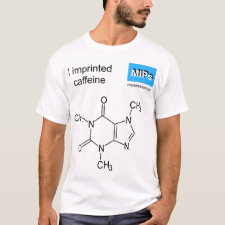
Authors: Chou TC, Rick J, Chou PC, Chen HC, Hu CH, Wang SH, Yang HC, Chang TY
Publication date: 2005
Article title: Molecular imprinting and its applications in bio-molecular sensing and purification.
Page numbers: 785
Volume number: MA 2005-02
Conference information: Proceedings 208th Meeting of The Electrochemical Society
Abstract: Molecular imprinting is a technique for introducing functional and spatial recognition into polymeric matrices formed around a target molecule that has attracted a considerable amount of interest in recent years. The polymers formed exhibit high selectivities and affinities for their original imprint species, often rivalling that of natural antibodies. Our laboratory has been pursuing the development of these materials, both for incorporation in sensors for molecules of biological interest, where imprinted polymers serve as a means of introducing exquisite tailored selectivity into the sensing device, and also as recognition materials for use in separation applications, in which their inert and robust qualities make them ideally suited for solid phase extraction applications. Our approach has been to apply basic science such as heat-flow measurements to the optimisation of the polymer formulations. In this way we have successfully formed imprinted polymers able to recognise a wide variety of analytes of interest; ranging from proteins, such as lysozyme, albumin and c-reactive protein (CRP), to creatinine, caffeine and various isoflavones 1,2. One technique we have extensively developed is micro-contact imprinting, in which only mg quantities are needed to generate imprints with excellent recognition properties. This technique has been applied to the imprinting of CRP, allowing us to form the first reported imprint of a multi-subunit protein (Fig. 1). As tools for separation we have developed imprinted polymers as extraction media for potentially high value 'bio-actives', e.g. the isoflavone genistein, and also for materials with health related issues, such as caffeine. In addition to discussing the above work our current projects and future objectives will be described
Template and target information: genistein, caffeine, proteins, lysozyme, albumin, c-reactive protein, CRP, creatinine, isoflavones



Join the Society for Molecular Imprinting

New items RSS feed
Sign-up for e-mail updates:
Choose between receiving an occasional newsletter or more frequent e-mail alerts.
Click here to go to the sign-up page.
Is your name elemental or peptidic? Enter your name and find out by clicking either of the buttons below!
Other products you may like:
 MIPdatabase
MIPdatabase









